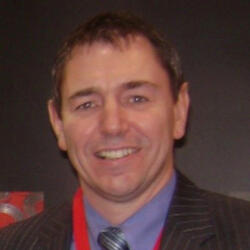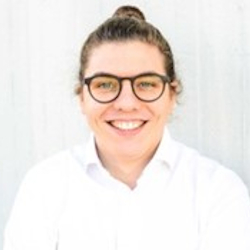2021 Workshops program
WORKSHOPS
Please check back for more updates.
THURSDAY, SEPTEMBER 23, 2021
Note: the workshops language is English.
09:20-09:50
Scaling Additive Manufacturing for Mass production of Aerospace Parts
In this presentation you will discover how Avio Aero is scaling up 3D-printed part production to an industrial level through an integrated additive manufacturing software solution, while meeting the high standards of the aerospace industry and maintaining industrial efficiency in the production environment.
09:55-10:25
ASSESSING PRINTED PART STRENGTH AND FATIGUE IN THE CONTEXT OF AN END TO END ADDITIVE MANUFACTURING PLATFORM
Siemens is one of the top 3 patent filers in the field of additive manufacturing, both for processes and software. One of our major actual research areas concerns the effective consideration of the properties of printed materials (porosity, surface texture, residual stresses, etc.) in the simulation of part performance.
Additive Manufacturing on one hand opens the door to explore a larger design space but on the other hand also introduces new variabilities in the material properties, which need to be taken into account for an accurate assessment of the strength and fatigue properties of the 3D printed component. This workshop focuses on Additive Manufacturing induced local material properties and defects and how these can be accounted for efficiently in part scale performance simulation with Materials Engineering and Specialist Durability.
Additive Manufacturing on one hand opens the door to explore a larger design space but on the other hand also introduces new variabilities in the material properties, which need to be taken into account for an accurate assessment of the strength and fatigue properties of the 3D printed component. This workshop focuses on Additive Manufacturing induced local material properties and defects and how these can be accounted for efficiently in part scale performance simulation with Materials Engineering and Specialist Durability.
10:30-11:00
Smart Additive Manufacturing: Hexagon supports the industrialization of your AM activity, from product design and process simulation to production, all the way to final part inspection
Highlighted by concrete examples, Hexagon will present its concept of a smart additive manufacturing solution. This solution and the platform that supports it will accelerate the digital transformation and industrialization of additive manufacturing by:
- Connecting the different steps of the AM product development and manufacturing chain, from generative design to process simulation (including post-treatment and secondary OPs such as heat treatment and milling) to quality control,
- Automating workflows reflecting your AM activity,
- Providing organized data captured throughout the complete chain, ready for analytics, in order to better understand quality issues and make informed and impactful decisions.
HEXAGON
Mathieu PERENNOU
Global Business Development Director - Additive Manufacturing
11:05-11:35
Scaling production to deliver the future demands of AM polymer in aerospace
In this presentation, Peter Adams, Founder & Chief innovation officer at Burloak Technologies will discuss how Burloak is scaling its additive manufacturing solutions to meet the growing demand for Polymer parts in the aerospace industry. Peter will address the pros and cons of the various technologies they utilize and will provide an overview of High-Speed Extrusion printing.

BURLOAK TECHNOLOGIES
Peter ADAMS
Founder & Chief Innovation Officer
11:40-12:10
How To Produce Spherical Metal Powders for Additive Manufacturing Processes
The availabilty of high quality metal powders is decisive for the success of additive manufacturing technologies. Ideally, powders are spherical, agglomerate-, pore- and satellite-free. Besides this main challenge of achieving perfect particle morphology, powder producers struggle with a low product yield for the requested narrow particle size distributions as well as high production costs due to bad energy conversion during the atomization process.
This presentation describes the evolution of the molten alloy from the melt tundish until its transformation into metal powder. After the formation of a liquid film at the nozzle tip, the melt undergoes primary breakup into ligaments which further break down into „sausage-shaped“ fragments. These either spheroidise or undergo secondary breakup, while – at the same – time they cool down and solidify. Additionally, depending on the atomization gas atmosphere, also surface oxides or nitrides may be formed.
The presented theoretical calculations show, how the powder formation process can be influenced to produce more spherical powders. Practical results (e.g. for aluminium and steel powders) are shown to emphasize the importance of understanding and controlling the atomization process.

METALPINE GMBH
Dr. Martin DOPLER
Co-Founder and Technical Director
14:00-14:30
Opportunités de financement public pour soutenir l'innovation
[Atelier en français]
Le pôle Aerospace Valley et la Région Occitanie présenteront un panorama des financements publics disponibles pour soutenir l’innovation, au niveau regional, national et européen.
Le pôle Aerospace Valley et la Région Occitanie présenteront un panorama des financements publics disponibles pour soutenir l’innovation, au niveau regional, national et européen.
14:35-15:05
Investigation for a PEEK printing implementation: Thales Alenia Space Example
PEEK (derived from Polyetheretherketone) has been known in the Space Industry for its mechanical strength, its high strength-to-weight ratio, and its high-temperature resistance (among many other properties). Main players in the Space Industry have been mainly using PEEK to 3D print parts dedicated to jigs and fixtures. But what if there is more to PEEK?
The use of PEEK in spacecraft production is leading towards new possibilities.
The use of PEEK in spacecraft production is leading towards new possibilities.









